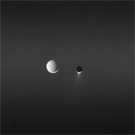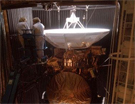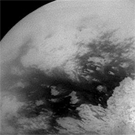


Narrative description examples:
Bill Cochran (212 words)
William Cochran is a Senior Research Scientist with McDonald Observatory. He received his B.S. degree in physics from Duke University, and his Ph.D. in astrophysics from Princeton. He came to the University of Texas as a PostDoc in 1976, and has been here ever since. He started his career studying the composition and structure of outer planet atmospheres. His interests then shifted to the detection and characterization of extra-solar planets. In 1989, he and Artie Hatzes started one of the pioneering ground-based radial velocity searches for giant planet companions to nearby stars, using the McDonald Observatory 2.7m Harlan J. Smith Telescope. This search program has grown tremendously, and now also uses the Hobby-Eberly Telescope and the W.M. Keck Observatory as appropriate. Cochran is a Co-Investigator on NASA's Kepler spacecraft mission. Kepler is designed to determine the frequency of terrestrial and larger planets in or near the habitable zone of a wide variety of types of stars by searching for the minute dimming of the star light as a planet transits the star. Cochran's role in Kepler is to use ground-based telescopes to conduct complementary follow-up observations to confirm that the transits seen by Kepler are due to planets and to learn more about the characteristics of the parent stars and planetary systems.
Jack Holt (242 words)
I am a Research Scientist at the Institute for Geophysics, Jackson School of Geosciences. I also sometimes teach in the Department of Geological Sciences and at Deep Springs College, California. I received a B.S. in Electrical Engineering from Rice University and then worked for JPL for two years, primarily in Radar Science and Engineering. I then received M.S. and Ph.D. degrees in Geology from Caltech, where I studied geomagnetic field behavior. I returned to JPL as a post-doc, and in 1998 I joined the UTIG cryospheric studies group, acquiring airborne geophysical data in Antarctica including radar sounding of the ice sheet to map subsurface topography and internal layering. This led to Mars analog work in the Dry Valleys of Antarctica, and NASA funding to develop analysis techniques applicable to the orbital radar sounding of Mars. In early 2007 I was selected to be on the Mars Reconnaissance Orbiter Science Team, assigned to the SHARAD radar instrument. Along with my students, I am currently working on the evolution of the northern polar layered deposits, including the spiral troughs and large chasma, through the analysis of detailed, 3-dimensional radar stratigraphy. I am also studying glacial ice in the middle latitudes, preserved under a blanket of rock and dust. All of these features are related to the movement of water ice controlled primarily by climate, presumably with forcing from orbital variations.


